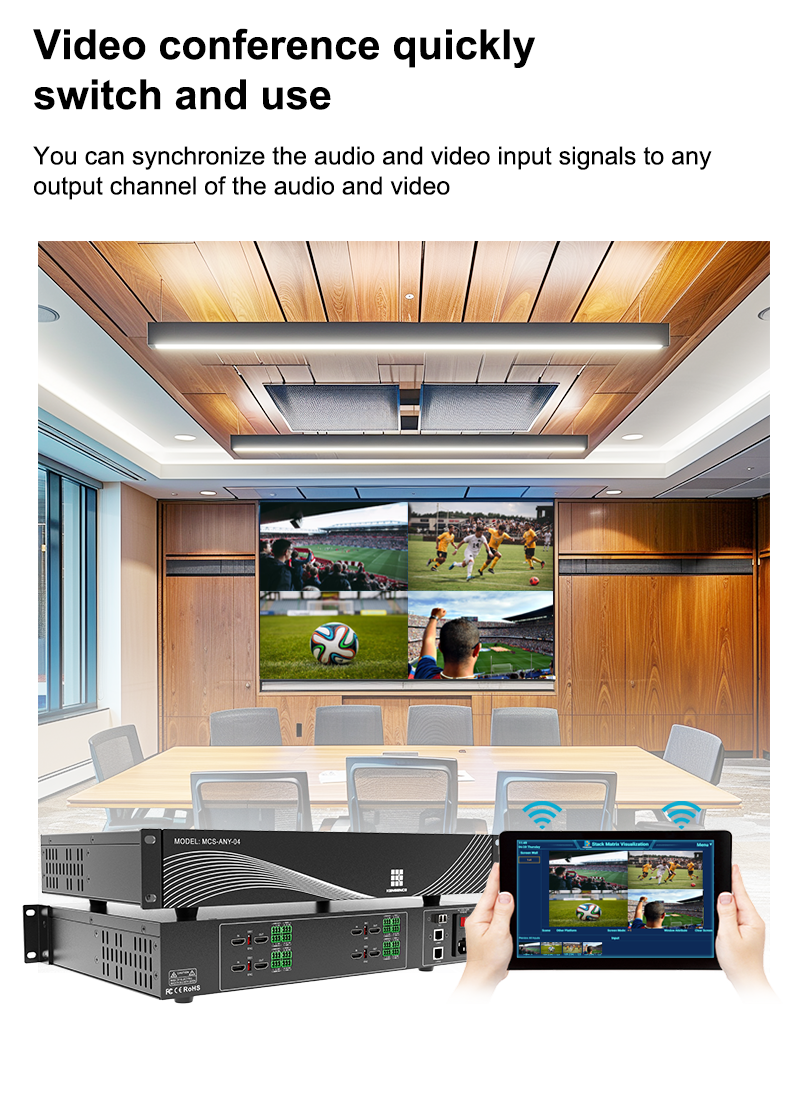Application of HDMI Matrix in Multimedia Classrooms
In modern educational environments, multimedia classrooms have become an indispensable component. To support the connection and switching of various media devices, HDMI matrices have gradually emerged as critical equipment in multimedia classrooms. This article focuses on the application of HDMI matrices in multimedia classrooms and explores their advantages and suitability.

First, let’s understand what an HDMI matrix is. An HDMI matrix is a device used for signal switching and distribution, capable of simultaneously connecting multiple HDMI input sources and multiple HDMI output devices. This means that in a multimedia classroom, teachers and students can effortlessly switch and share different media sources—such as computers, projectors, and interactive whiteboards—through the HDMI matrix.
The applications of HDMI matrices in multimedia classrooms are extensive. First, they enable seamless switching between different media devices. Teachers can connect their computers, mobile devices, or other media players to the classroom projector or display via the HDMI matrix, allowing flexible multimedia presentations and teaching. With simple controls, teachers can easily switch or share on-screen content, making the teaching process smoother and more efficient.
Second, HDMI matrices support multiple teachers or students using different media devices simultaneously. In multimedia classrooms, it is common for several individuals to present or demonstrate at the same time. With an HDMI matrix, teachers and students can connect their devices to the matrix and use the switching function to effortlessly display their content on the main screen. This collaborative approach significantly enhances teaching and learning effectiveness, ensuring everyone can actively participate in the class.
Additionally, HDMI matrices help simplify cabling and management for classroom administrators. By centralizing multiple HDMI device connections to the matrix, cumbersome wiring can be avoided, and connection clutter between devices can be reduced. Administrators can easily configure and manage HDMI device connections through the matrix to ensure optimal use of classroom equipment and media resources.
Finally, HDMI matrices also offer scalability and flexibility. The needs of multimedia classrooms may evolve over time with technological advancements, and HDMI matrices provide excellent expandability. By adding or replacing input and output devices as needed, classrooms can expand or upgrade their systems without replacing the entire setup.
In summary, HDMI matrices play a vital role in multimedia classrooms. They facilitate seamless switching and sharing of multimedia devices, support multi-user collaboration and presentations, simplify cabling and management, and provide scalability and flexibility. As a core device, HDMI matrices enhance teaching effectiveness and administrative efficiency in multimedia classrooms, creating a better teaching and learning experience for both students and educators.